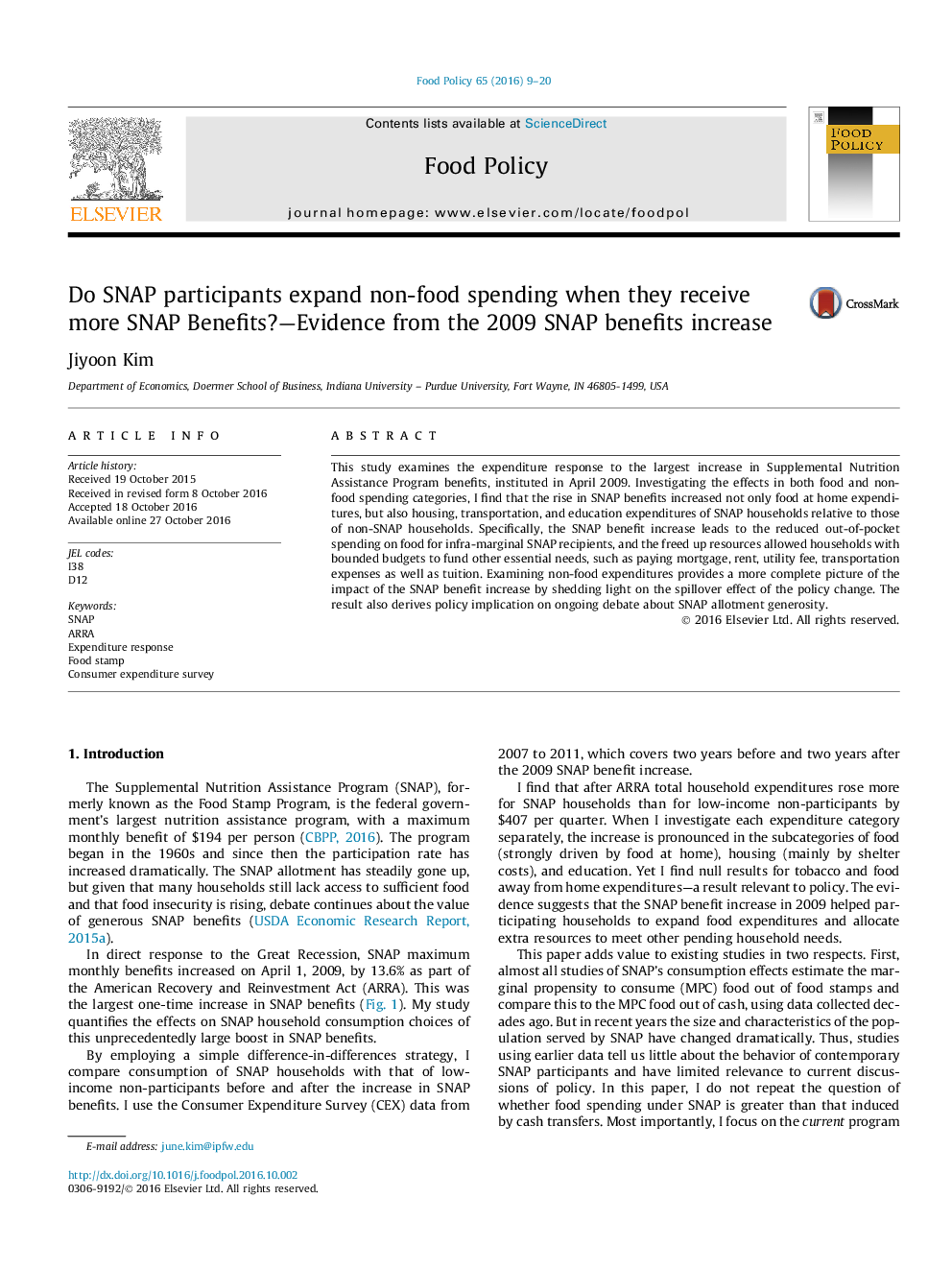| Article ID | Journal | Published Year | Pages | File Type |
|---|---|---|---|---|
| 5070082 | Food Policy | 2016 | 12 Pages |
â¢I examine the expenditure response to the largest increase in SNAP benefits.â¢The rise in SNAP benefits increased both food and non-food expenditures.â¢It is the first to study non-food spending in response to the benefit change.â¢Specifically, recipients increased housing, transportation, and education spending.â¢Extra resources from the benefit boost were allocated to meet other spending needs.â¢The results shed light on the spillover effect of the SNAP benefit increase.
This study examines the expenditure response to the largest increase in Supplemental Nutrition Assistance Program benefits, instituted in April 2009. Investigating the effects in both food and non-food spending categories, I find that the rise in SNAP benefits increased not only food at home expenditures, but also housing, transportation, and education expenditures of SNAP households relative to those of non-SNAP households. Specifically, the SNAP benefit increase leads to the reduced out-of-pocket spending on food for infra-marginal SNAP recipients, and the freed up resources allowed households with bounded budgets to fund other essential needs, such as paying mortgage, rent, utility fee, transportation expenses as well as tuition. Examining non-food expenditures provides a more complete picture of the impact of the SNAP benefit increase by shedding light on the spillover effect of the policy change. The result also derives policy implication on ongoing debate about SNAP allotment generosity.
